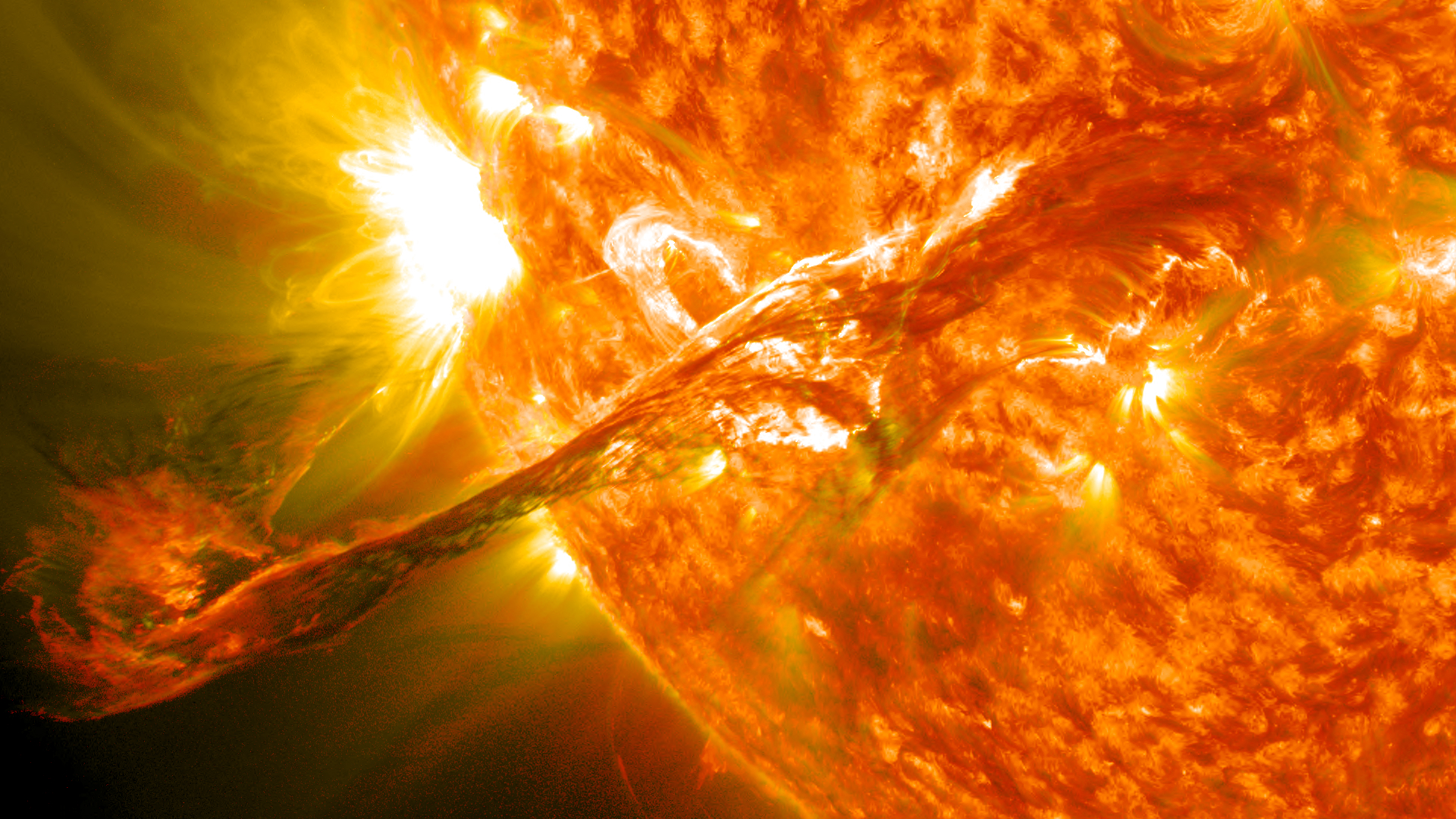The National Oceanic and Atmospheric Administration (NOAA) has raised alarms about an impending solar storm, potentially the most potent in nearly two decades, slated to hit outer space on Friday. This comes as the first such alert issued since 2005, when Earth was engulfed in the highest radiation dose in fifty years.
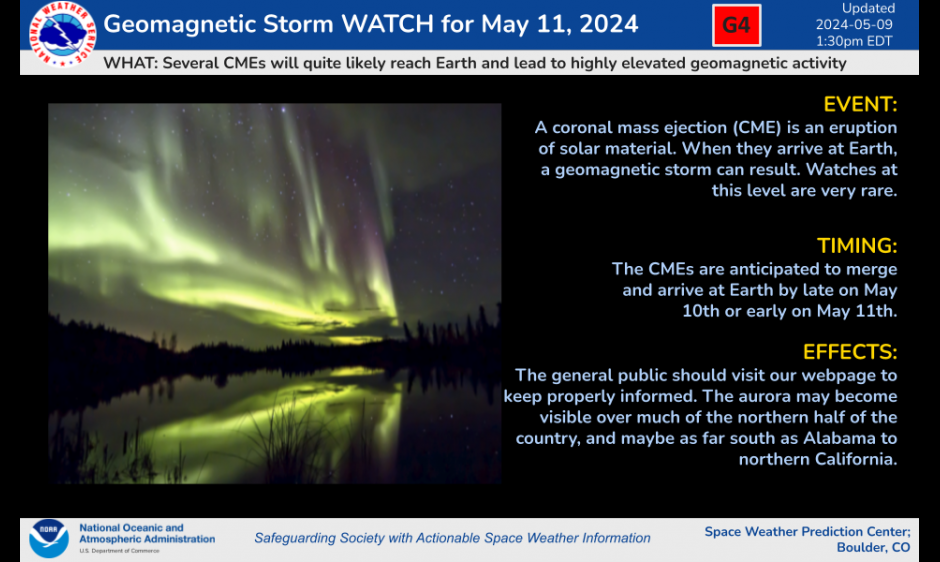
The Severe (G4) Geomagnetic Storm Watch was announced late Thursday by NOAA, highlighting concerns over potential disruptions to electronic infrastructure such as GPS systems and segments of power grids. Additionally, there’s anticipation for a stunning celestial display known as an ‘aurora,’ potentially visible across a significant swath of the nation.
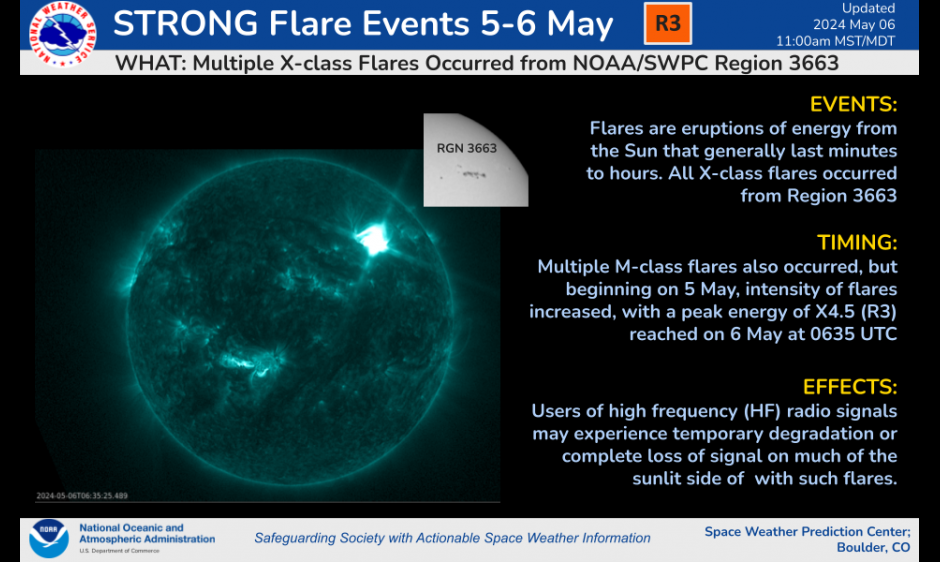
This alert follows a sequence of solar flares observed since Wednesday, characterized by substantial expulsions of plasma from the sun. These events culminated in Thursday’s announcement, where NOAA experts detailed how the ejections of matter and magnetic fields from the sun could affect millions of people as early as noon ET on Friday.
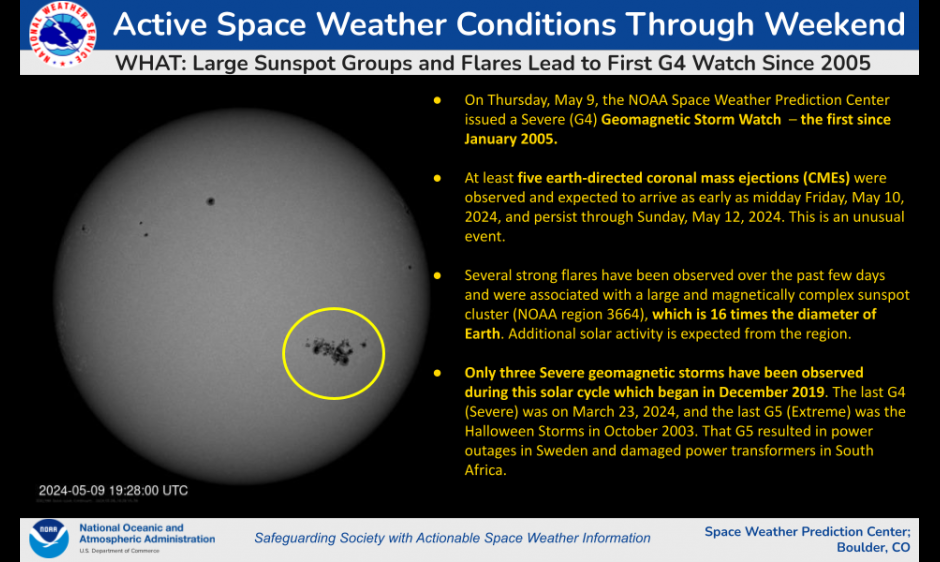
“NOAA’s Space Weather Prediction Center (SWPC) is closely monitoring the sun following a series of solar flares and coronal mass ejections (CMEs) that began on May 8,” the emergency alert stated. “Space weather forecasters have issued a Severe (G4) Geomagnetic Storm Watch for the evening of Friday.”
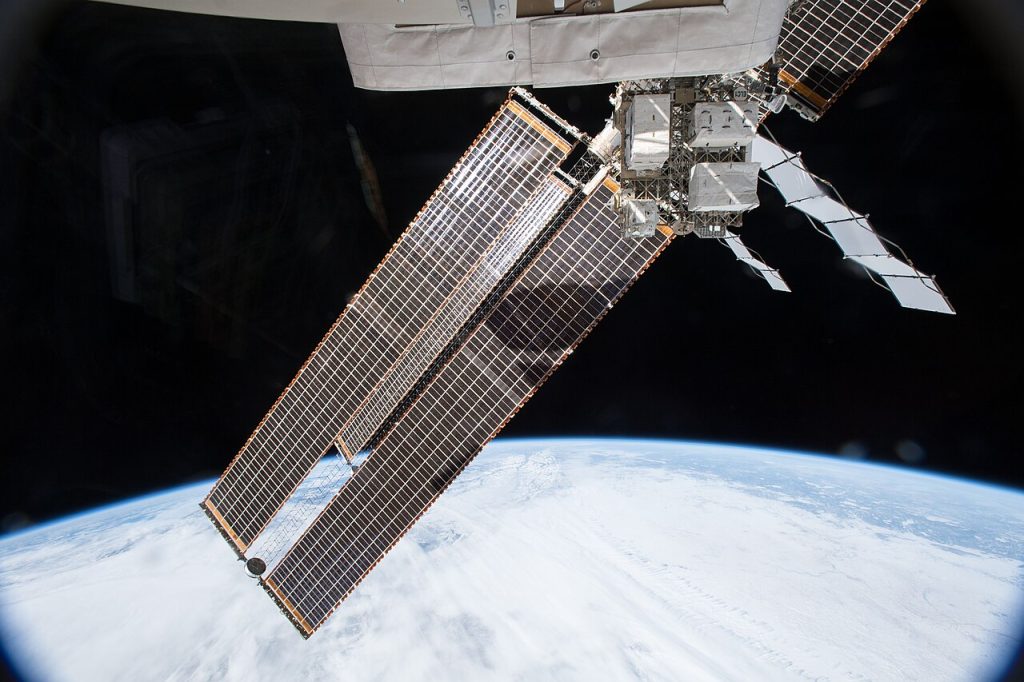
The statement continued, indicating the possibility of prolonged geomagnetic storm conditions throughout the weekend due to additional solar eruptions.
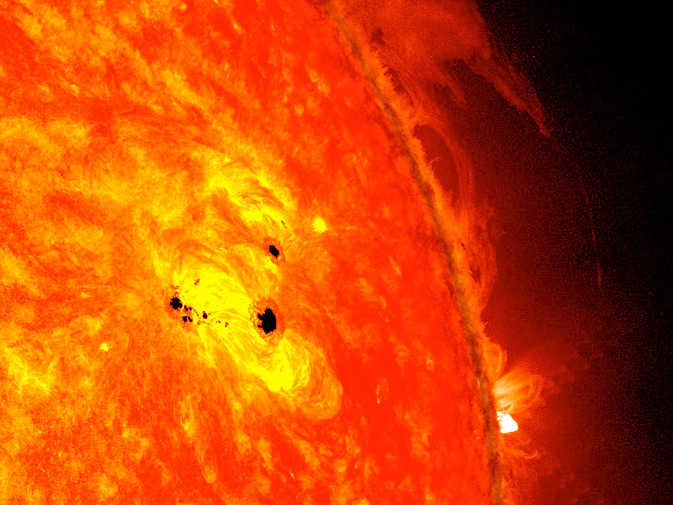
Notably, a large cluster of sunspots has been identified as the source of multiple moderate to strong solar flares since Wednesday morning.
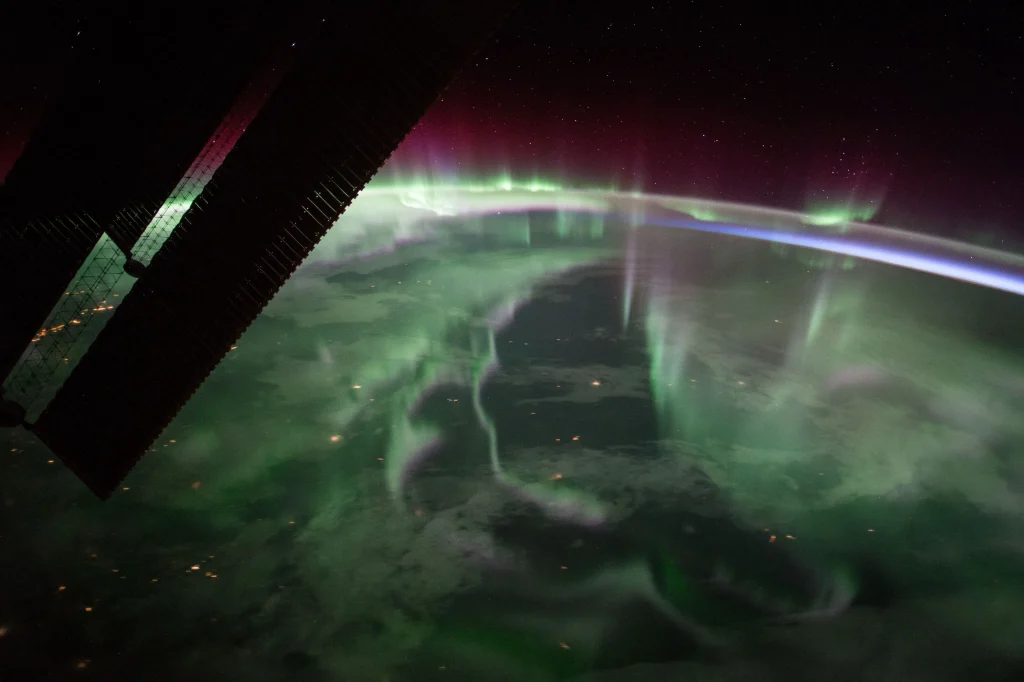
The SWPC emphasized the potential impact of coronal mass ejections (CMEs), explosions of plasma and magnetic fields from the sun’s corona, especially when directed at Earth.
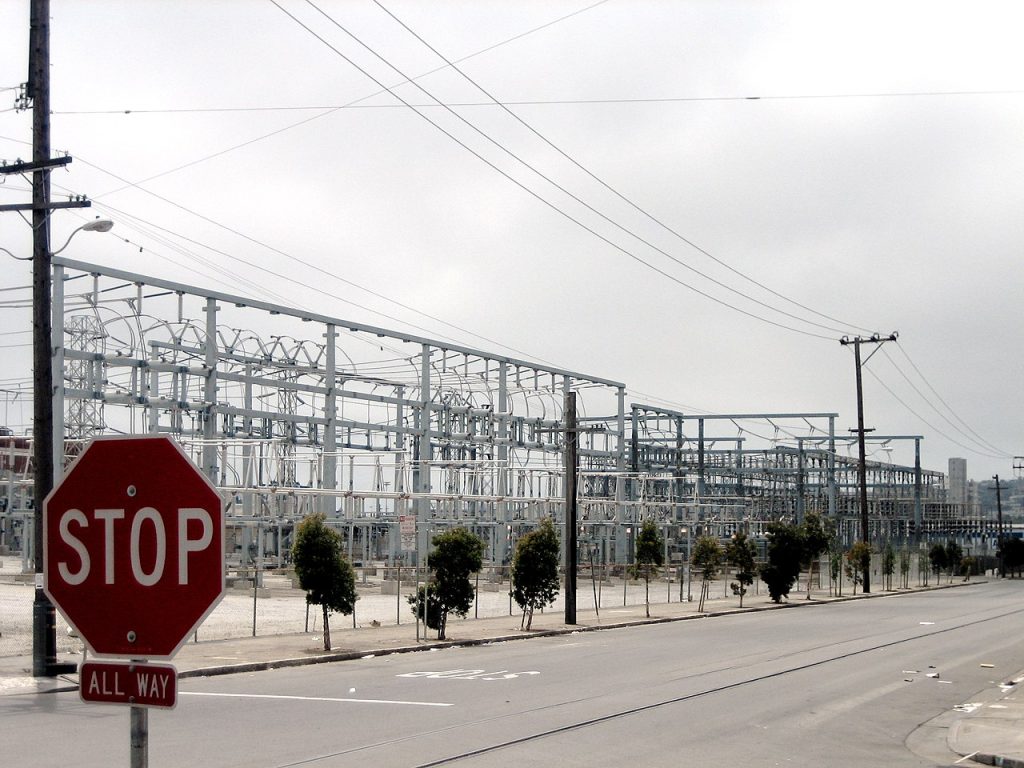
Geomagnetic storms resulting from such events can disrupt infrastructure both in near-Earth orbit and on the planet’s surface, affecting communications, power grids, navigation systems, radio transmissions, and satellite operations.
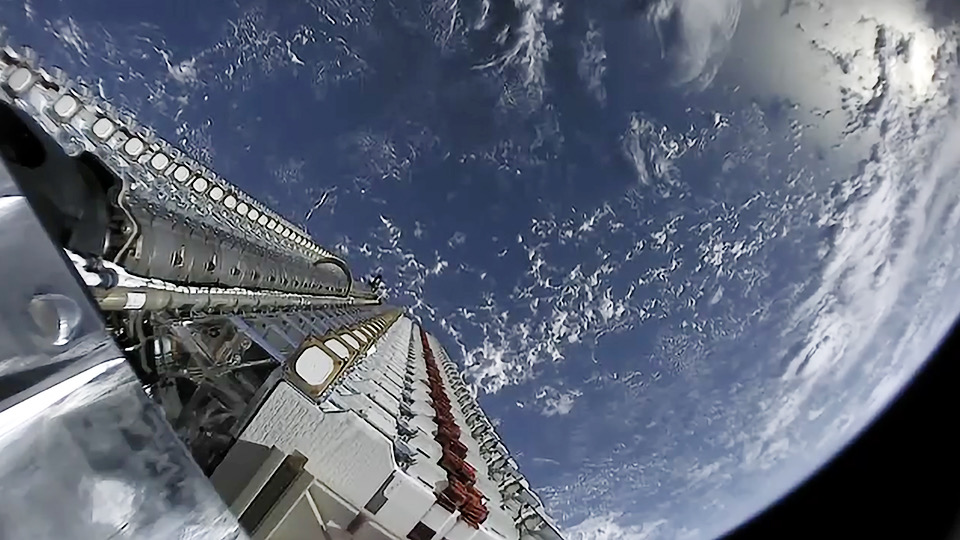
Moreover, there are concerns about potential internet disruptions, as NOAA upgraded the Geomagnetic Storm Watch from Moderate to Severe for Friday through Sunday.
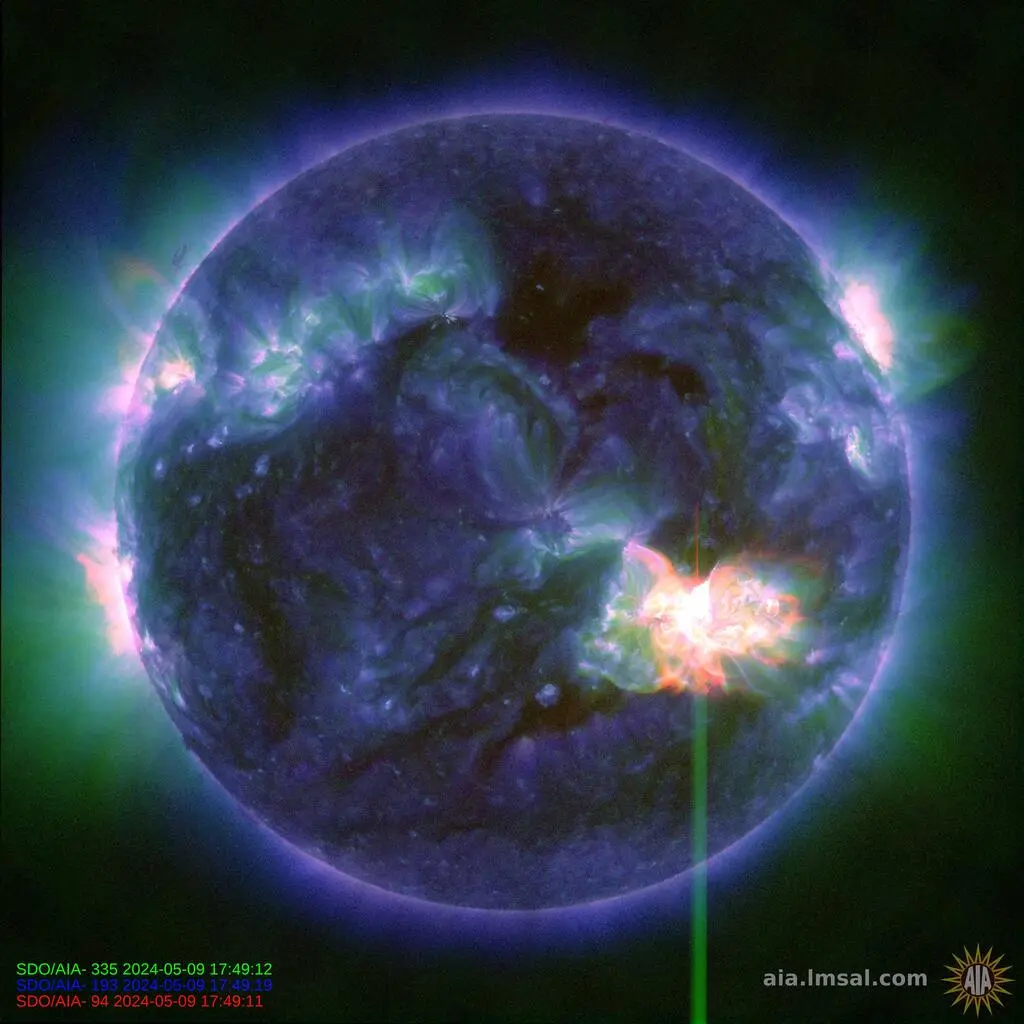
Scientists urge vigilance and preparedness in the face of this rare and potentially impactful space weather event.

